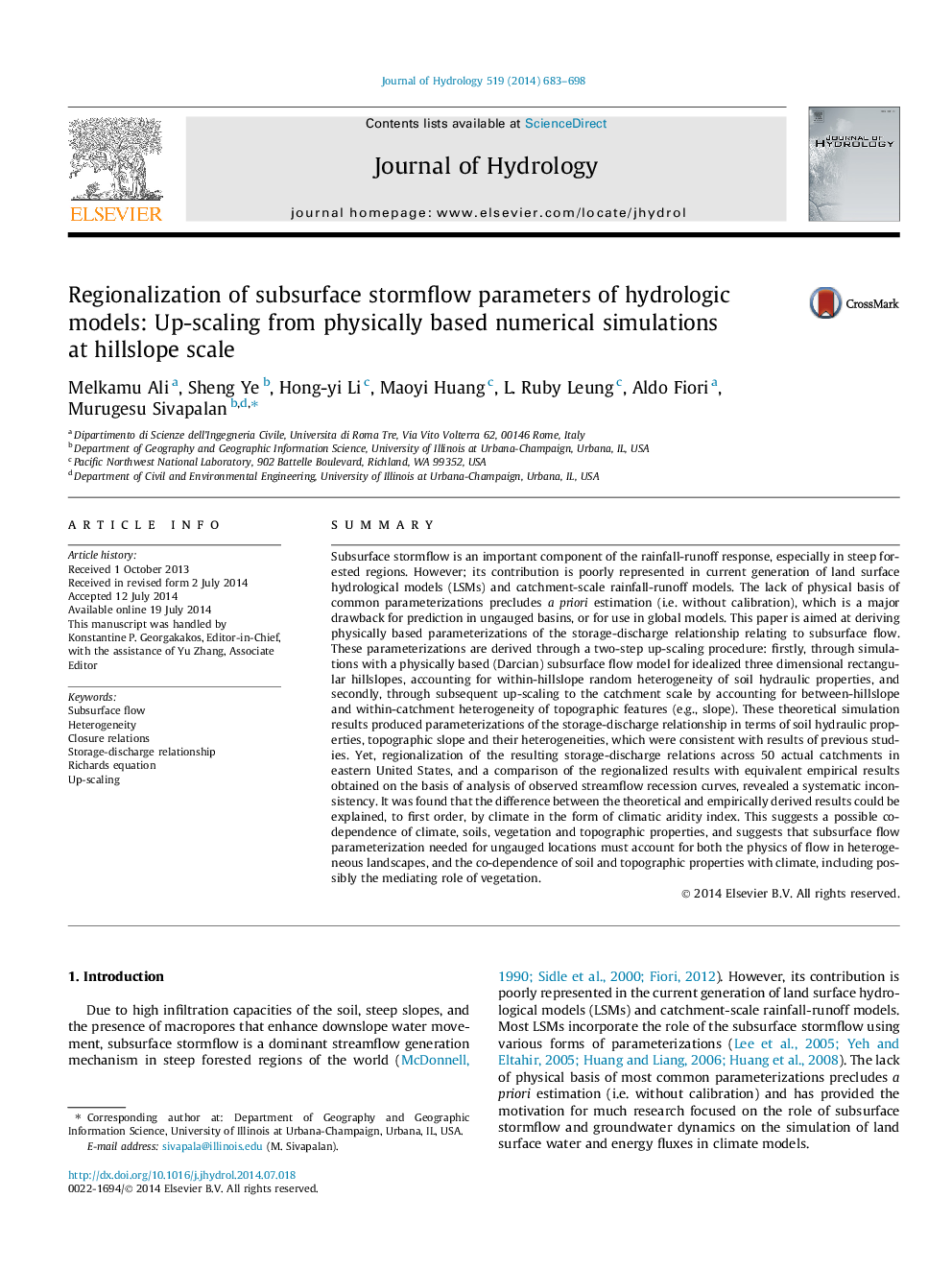| Article ID | Journal | Published Year | Pages | File Type |
|---|---|---|---|---|
| 6412469 | Journal of Hydrology | 2014 | 16 Pages |
â¢Two-stage up-scaling procedure developed for catchment storage-discharge relations.â¢Storage-discharge relationships are derived and parameterized for 50 US catchments.â¢These are compared with storage-discharge relations derived from recession curves.
SummarySubsurface stormflow is an important component of the rainfall-runoff response, especially in steep forested regions. However; its contribution is poorly represented in current generation of land surface hydrological models (LSMs) and catchment-scale rainfall-runoff models. The lack of physical basis of common parameterizations precludes a priori estimation (i.e. without calibration), which is a major drawback for prediction in ungauged basins, or for use in global models. This paper is aimed at deriving physically based parameterizations of the storage-discharge relationship relating to subsurface flow. These parameterizations are derived through a two-step up-scaling procedure: firstly, through simulations with a physically based (Darcian) subsurface flow model for idealized three dimensional rectangular hillslopes, accounting for within-hillslope random heterogeneity of soil hydraulic properties, and secondly, through subsequent up-scaling to the catchment scale by accounting for between-hillslope and within-catchment heterogeneity of topographic features (e.g., slope). These theoretical simulation results produced parameterizations of the storage-discharge relationship in terms of soil hydraulic properties, topographic slope and their heterogeneities, which were consistent with results of previous studies. Yet, regionalization of the resulting storage-discharge relations across 50 actual catchments in eastern United States, and a comparison of the regionalized results with equivalent empirical results obtained on the basis of analysis of observed streamflow recession curves, revealed a systematic inconsistency. It was found that the difference between the theoretical and empirically derived results could be explained, to first order, by climate in the form of climatic aridity index. This suggests a possible co-dependence of climate, soils, vegetation and topographic properties, and suggests that subsurface flow parameterization needed for ungauged locations must account for both the physics of flow in heterogeneous landscapes, and the co-dependence of soil and topographic properties with climate, including possibly the mediating role of vegetation.
